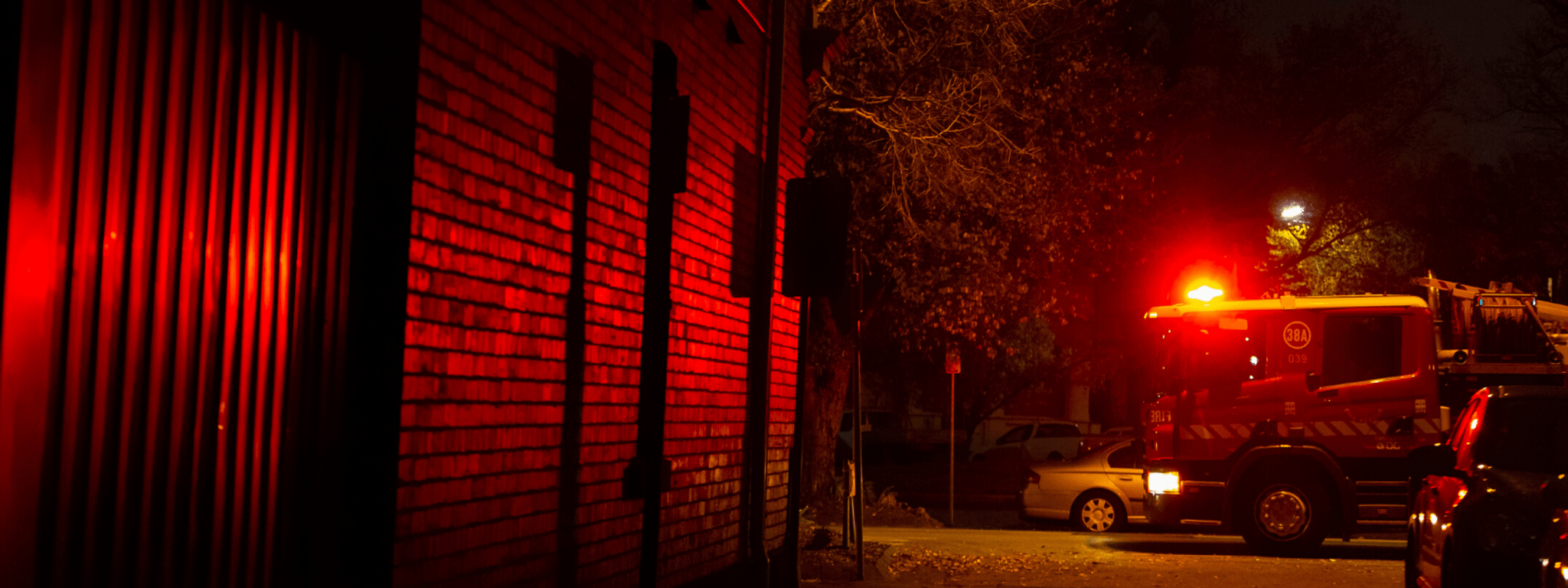Rapid response times are essential to save lives, reduce property damage and minimise the impact emergency events have on individuals and the community.
We set ourselves high benchmarks to ensure we continue to strive for excellence and instil community confidence in our service. Results are published quarterly.
Our Service Delivery Standards (SDS) set how fast we must respond to emergencies. We track this performance within Station Maintenance Areas (SMAs).
SMAs are the areas where fire station platoons are deployed. Performance is measured for SMAs, not individual fire stations, as first response may come from a neighbouring station.
FRV’s SDS are the same across all of Victoria and are to:
- Respond to structure fires within 7.7 minutes (7 minutes and 42 seconds)
- Respond to emergency medical response (EMR) incidents within 9.2 minutes (9 minutes and 12 seconds)
- Respond to Code 1 incidents (all emergency call outs) within defined SDS. This is 9.2 minutes for EMR incidents and 7.7 minutes for all others.
2024-25
2023-24
2022-23
2021-22
2020-21
2019-2020 (from 1 January)
From the date of its establishment on 1 July 2020, Fire Rescue Victoria is the successor in law to the Metropolitan Fire and Emergency Services Board (MFB) (under section 99 of the Fire Rescue Victoria Act 1958).
Therefore, MFB’s response time data for 1 April 2020 to 30 June 2020 is published here.
From the date of its establishment on 1 July 2020, Fire Rescue Victoria is the successor in law to the Metropolitan Fire and Emergency Services Board (MFB) (under section 99 of the Fire Rescue Victoria Act 1958).
Therefore, MFB’s response time data for 1 January 2020 to 31 March 2020 is published here.
MFB_ResponseTimes_Q3_201920(opens in a new window)Excel 127.05 KBView CFA response times for this period via: https://www.cfa.vic.gov.au/about/emergency-response-times
FRV is committed to providing the best possible service to the community.
If you call us, we will be there, 24 hours a day, seven days a week.
About response times
Response times are measured by the length of time between an appliance being dispatched to an emergency incident and arrival on scene.
Response time is defined as the interval between appliance dispatched and the arrival of the first vehicle at the scene.
That is, when the vehicle is stationary and handbrake is applied.
Response times can be affected by a range of factors, including:
- Single appliance stations
- Larger areas for individual brigades to cover in outer suburbs (resulting in longer travel times)
- Road network congestion (particularly in peak times)
- Road works (i.e. major works on freeway systems)
- Road traffic collisions
- Rail crossings and boom gates
- Extreme weather
- Increase in urban sprawl
- Time of day
FRV is committed to releasing response time performance data quarterly.
Statistics are published by Station Maintenance Area.
Station Maintenance Areas not responding to a minimum number of incidents are not reported on. This is because the numbers are not statistically significant.
These reports include response time data for the first FRV appliance responding to incidents in the FRV district.
- Response time is defined as the interval between appliance dispatched and the arrival of the first vehicle at the scene. That is, when the vehicle is stationary and handbrake is applied.
- Structure Fire, Emergency Medical Response and all Emergencies are reported by fire station maintenance area.
- Reporting period is quarterly.
- A minimum of ten incidents per fire station maintenance area for the reporting period to be included in the report.
- Emergency calls only excludes all calls where vehicles travel ‘Code 3’ (under normal road conditions).
- Excludes records with incomplete time stamps and records where the appliance was called off en-route to scene.
- Includes ‘genuine’ outliers and 0 response times (i.e. where passing appliance notifies the event).
- Data Source(s): AIRS/Firecom database.
Updated
